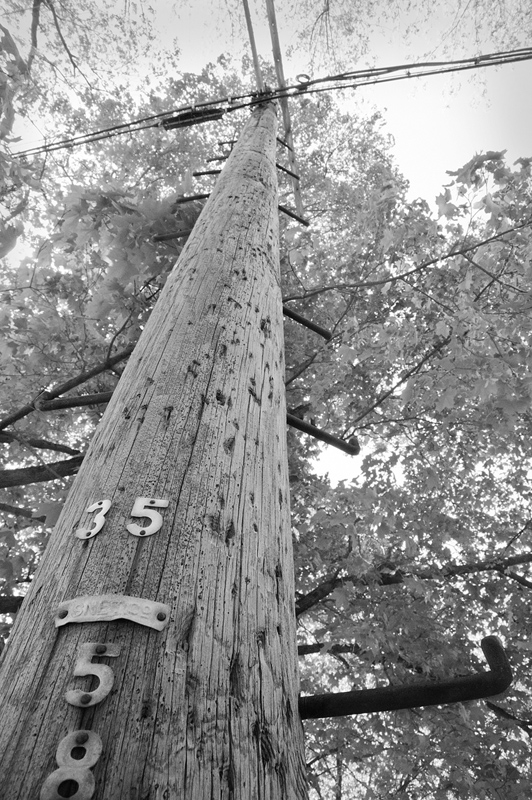Norfolk’s Silent Sentinels
Everything You Need to Know About Utility Poles
By John G. Funchion
There are 2,153 utility poles in Norfolk. These poles, standing as silent sentinels for years on our roadsides, provide us with all the amenities of modern living: electricity, cable television and internet access.
Utility poles were first used above ground in the 19th century to accommodate the telegraph system developed by Samuel Morse. Most of the early poles were made of hardy chestnut wood, but all the newer poles in Connecticut are Southern white pine.
“The poles are usually 40-feet in length and weigh between 1,700 and 2,000 pounds,” says Mitch Gross, spokesman for Connecticut Light and Power Company (CL&P). “There are 733,000 utility poles in 149 communities here in Connecticut alone. All are jointly owned by CL&P and AT&T.”
According to Norfolk resident Paul Adamson, a 26-year veteran lineman with Northeast Utilities, the newer poles have all been impregnated with copper chromium arsenic (CCA). “Water is used to push the CCA into the poles,” says Adamson. “As the result, they are very brittle in winter and split easily when hit by any vehicle.”
In the past, the life expectancy of a pole was anywhere from 25 to 50 years, with some of the old chestnut poles, most coated in creosote, lasting up to 100 years.
The fact that there are 2,153 utility poles in Norfolk comes as no surprise to John Funchion. An inveterate walker, he counted them all.
No chestnut poles are left in Norfolk, but there are two very old cedar poles on Winchester Road, across from Broadfield Farm. These poles have an aged patina of spaghetti-like swirls in the wood grain. Cedar poles last a very long time due to their natural immunity to water rot without the use of preservatives.
The most unique pole in Norfolk sports those once ubiquitous “spike ladders” that started six to seven feet off the ground. It’s an old Southern New England Telephone Company pole located on Mountain Road in front of the home of Town Clerk Linda Perkins.
The street with the highest number of poles, totaling 240, is Route 272 South from Village Green to the Goshen border. On the other extreme, Tim O’Connor Road, adjacent to Beckley Road, is home to the only singular pole in Norfolk.
Schoolhouse Road is the only street in town with underground electric lines. “One half of the street is underground because of an old conflict between AT&T and CL&P,” says Selectman Jim Stotler, a life-long Schoolhouse Road resident. “The phone company wanted to go underground, the electric company went high. The result is that the western end of the street has poles, the rest does not.” Consequently, there is no high speed internet there.
Almost all poles have metal identification badges attached to them, which indicate the number of each pole and what company is responsible for it. With the use of modern technology, including satellite GPS systems, the location of individual poles can now be identified almost immediately.
As First Selectman Susan Dyer is fond of pointing out, utility poles are all taxable, making CL&P Norfolk’s highest taxpayer. In fact, according to Town Assessor Michelle Sloan, CL&P provided Norfolk last year with $57,000 in taxes, or $26.69 per pole.
One component of the utility poles, the wire insulators, has a distinct connection to Norfolk. Originally, notches were carved in the poles to accommodate the wires, but during inclement weather, the wooden pole caused a leakage in the current through the wood to the ground, so they began insulating the wire with glass knobs.
An early, emerald-green glass insulator was discovered serendipitously during an excavation by the D&D Concrete Company of Torrington while preparing a foundation for the old Flower Box on Grant Street. That particular insulator was patented on May 31, 1870 by one James Brookfield, founder of the Bushwick Glass Works in Brooklyn, N.Y. James Brookfield was the great-grandfather of longtime Norfolk resident William Brookfield, who died in 2007.
The next time that you see a utility pole, take a closer look. Because of them, we light our homes, cook our food and communicate with each other, but they also stand as visible reminders of Norfolk’s rich and varied history.
